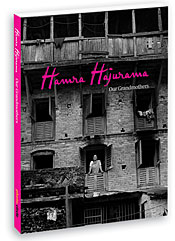 |
Much of Nepal's documented history lies within the scope of a few. In the feudal caste-based system that underlies Nepali society, this is no surprise. The educated were those in power, those in power wrote about themselves and what was written then is what history is today.
Alternative accounts of this history are slowly emerging but much has already been lost and is fading even as we seek to explore further. This is because the powerless, the poor and the illiterate - the forgotten generations of Nepali men and women, have only the spoken word. The most remarkable and highly commendable aspect of a new photobook, Hamra Hajurama: Our Grandmothers, is that it captures not only this oral tradition, but also the history of an oft-neglected generation.
'Photobook', however, is a misnomer. Hamra Hajurama: Our Grandmothers features 12 eloquently crafted stories to go with the pictures of its subjects. The spoken word is thus preserved. While the pictures give us a view into their world in the present, the text tells you who they are. More pictures would have been an excellent addition, but what is presented does justice to a generation of Nepali mothers and grandmothers that has suffered through a tradition of gender-based discrimination, and survived the radical changes of modernity.
Some of the stories are absolutely fabulous. They ground the reader within the fundamental core of Nepali society -the family. It is the family that lends Nepali society some of its greatest strengths but also some of its gravest weaknesses. One of the best is Nusrat Banu's tale and its accompanying set of photographs. The story of a Muslim grandmother is enthralling, the prose unobtrusive, but it evokes it all - the comfort and love of family and friends, the oppressions a woman has to endure, the reality of living as part of a minority, and the balancing act of tradition and modernity. The pictures complement the text vividly, and reveal to us not just the present but also the past. The understanding here between writer and photographer on their medium-specific interpretations of one hajurama is sublime.
While only a few of the other stories reach these heights of synergy, the book remains a visionary production. Not all the pictures complement the text and not all the texts seem to have captured the soul of the woman being interviewed. This is forgivable, given the challenge of synergising two mediums while simultaneously presenting the life of someone two generations in the past. One of the writers best expresses this intrinsic challenge of the book itself: "She knows that to allow me to tell her story is to let me decide what her life is about, to let me fix her and wield control over her. To let me know her is to allow me to exploit her, do whatever I want with her. To her, I am not an author, I am the authority - oppressing her with my narrative structures and greed for knowledge. What she has perceived is the unfairness of my intrusion, the inequality that separates me from her, storyteller from the subject."
Hamra Hajurama: Our Grandmothers is a photo.circle project. A book launch and exhibition will take place at the Nepal Art Council, Babar Mahal, at 11AM on 18th December. The exhibition will run until 25th December.


